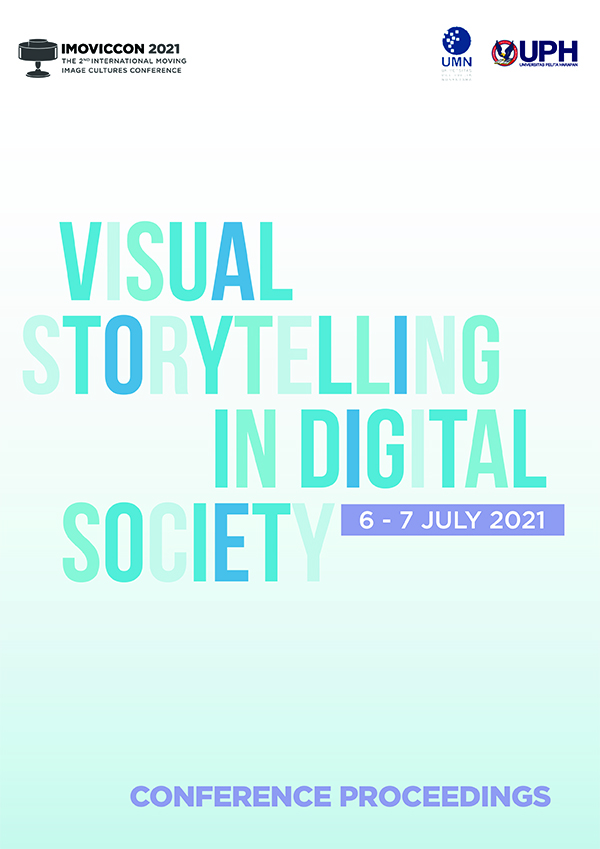Back to the Future: Reflections on the ”˜site’ of contemporary digital film culture through the Year 2000
Abstract
When speculating about the state of moving image in 2021, it might be instructive to explore the ”˜pre-history’ of the current streaming era - and therefore this paper will initially focus on a particular cultural/historical moment, the year 2000 (and the very early 2000s); the start of a new millennium and the peak of the ”˜dot com era’. This period was characterized by a huge burst of creative and technological energy related to moving image on the web, manifested in the emergence of specialised web portals such as Atomfilms, Shockwave, Heavy, Brickflims; independent creators such as Evan Mather and hi.res; a global plethora of Fanfilms (particularly based around Star Wars); as well as digital moving image festivals such as One Dot Zero (UK) and Res.Fest (US), which purported to be a window into the future, or at least the ”˜bleeding edge’ of new media aesthetics intersecting with cinema. In this pre-Broadband and pre-YouTube period, the web was a ”˜clunky’ and unreliable platform for a variety of technically complicated moving image files. However, it is possible to look back on the early 2000s as a liminal moment between the celluloid/video/physical media era and our remotely hosted, high-definition present. This paper will describe it as a fertile and open space, where artists and curators had the opportunity to dream of what the future might become, grappling with how moving image on the web (and their narrative language and aesthetics) could be envisioned differently from what had come before. If the Internet was a ”˜site’, what types of moving image work could be ”˜site-specific’? The paper will offer up key examples from that period and then jump forward in time to apply a similar framework of speculation to moving image online in the year 2021, and in the latter stages will explore what if any radical new ways of storytelling might arise as we move forward into an uncertain ”˜future’.
References
For more background on this plan and policy see https:// www.sheffield.gov.uk/home/planning-development/conservation-areas/cultural-industries- quarter (Accessed 15/5/2021)
Singapore’s plan for cultural development and the use of the arts was called The Renaissance City Report, the original report can be accessed here: https://www.nac.gov.sg/dam/jcr:defaf681-9bbb- 424d-8c77-879093140750 (Accessed 15/5/2021)
The original manifesto, entitled a ”˜Vow of Chastity’ can be read at this non- official tribute site: http://www.dogme95.dk/the-vow-of-chastity/ (Accessed 15/5/2021)
This interview with RESfest’s Jeremy Boxer from 2006, to promote what would turn out to be final edition, presciently grapples with the outdated-ness of the term digital: https://www.tokyoartbeat.com/ tablog/entries.en/2006/12/interview_with_resfests_jeremy.html (Accessed 15/5/2021)
Their current website https://www.onedotzero.com (Accessed 15/5/2021)
A more appreciative assessment of the programme can be found in Evans, G. ”˜Foreword
- Glimpse Culture: Celebrating Short Film’ in Elsey, E. & Kelly, A. (Eds) In Short: A Guide to
Short Film-Making in the Digital Age, Bloomsbury, London, 2002, pp. xv
De La Cruz, K., DIGITAL DEKALOGO A Manifesto for a Filmless Philippines, 2003 https:// khavntest.
wordpress.com/manifestos/digital-dekalogo/ (Accessed 15/5/2021)
This article, with input from Jon Ronson’s podcast The Butterfly Effect, outlines the “feedback loop”
scenario: Major, K. ”˜Online robots are creating porn - with disturbing results’ in The Independent, December 13, 2017, https://www.independent.co.uk/voices/robot-porn-online-algorithm-sex- videos-seo-google-ai-pornography-internet-pornhub-a8107826.html (Accessed 15/5/2021)
Similarpointsaremadeinthisarticle:Parkin,S.”˜TheBandersnatchEpisodeofBlackMirrorandthepitfalls of Interactive Fiction’ in The New Yorker, January 3, 2019, https://www.newyorker.com/culture/ on-television/bandersnatch-and-the-pitfalls-of-interactive-fiction (Accessed 15/5/2021)
See Shaw, J. Future Cinema: The Cinematic Imaginary After Film, MIT Press, 2003
Seide,B.,&Slater,B.“VirtualcinematicheritageforthelostSingaporeanfilmPontianak(1957)”.Culture
and Computing (HCII 2020) : Lecture Notes in Computer Science, 12215, pp. 396-414

